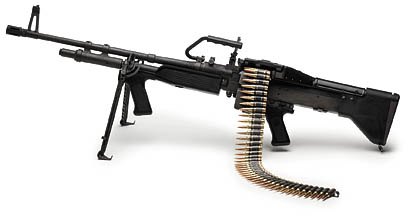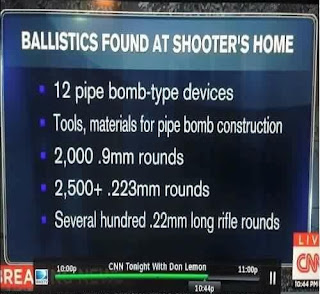Matthew 1.18-25:
18 Now the birth of Jesus the Messiah took place in this way. When his mother Mary had been engaged to Joseph, but before they lived together, she was found to be with child from the Holy Spirit. 19Her husband Joseph, being a righteous man and unwilling to expose her to public disgrace, planned to dismiss her quietly. 20But just when he had resolved to do this, an angel of the Lord appeared to him in a dream and said, ‘Joseph, son of David, do not be afraid to take Mary as your wife, for the child conceived in her is from the Holy Spirit. 1She will bear a son, and you are to name him Jesus, for he will save his people from their sins.’ 22All this took place to fulfil what had been spoken by the Lord through the prophet:He was faced with a detestable duty. He was a man of compassion, even tenderness. But he was also a man honor, a man of stern code. His obedience to the Law was unwavering. The moment he learned that his fiancé was pregnant he knew that it was the end. The end, certainly, of their betrothal, and perhaps even the end of her life.23 ‘Look, the virgin shall conceive and bear a son,which means, ‘God is with us.’ 24When Joseph awoke from sleep, he did as the angel of the Lord commanded him; he took her as his wife, 25but had no marital relations with her until she had borne a son; and he named him Jesus.
and they shall name him Emmanuel’,
It was two millennia ago in the Roman-occupied land of Judea. The man was named Joseph. His fiancé was Mary. She was going to have a baby and it sure was not his. Compassion, honor and duty dueled within Joseph. He could not pretend there was no problem. She obviously had betrayed him. The whole town of Nazareth was watching.
Finally, Joseph decided Mary would have to pay the price for infidelity as his honor and the Law required, but tempered with mercy. Joseph determined to break his engagement to Mary and dismiss her from his life without fanfare, leaving her to fend for herself. It would clear the slate, restore his honor and was as least hurtful to the young woman as any just solution could be.
What the outcome might have been by Joseph’s plan we don’t know, because God revealed to him what was really going on, and Joseph changed his mind.
Joseph dreamed of an angel, who informed Joseph that Mary’s unborn child was of the Holy Spirit. The angel gave Joseph instructions: take Mary home as his wife and adopt Mary’s child as his own, giving him the name Jesus, an ordinary name then, meaning,“God helps.”
These things came to pass. In Joseph’s day, when a Jewish man gave a name to the child born to his wife, he was confirming the child as his own. Maybe others knew that Joseph was not the baby’s natural father, maybe they didn’t. It didn’t matter. When Joseph named the baby Jesus, he was also giving to Jesus his own identity, his own lineage. That is why Jesus could truly be said to be of the line of David, because Joseph was of David’s line and Joseph adopted Jesus as his own son. When Joseph named the child Jesus he was telling the world, “This child belongs to me, this child is my child.”
We give Joseph short shrift, perhaps because Joseph is treated somewhat cursorily in the Gospels. Mary gets a lot more play. Joseph never speaks. Joseph hears, Joseph dreams, Joseph acts and Joseph obeys, but not even one syllable of his speaking is related. Mary is the one with the speaking part. Her role is the most sought after in Christmas pageants.
Another pastor told me of one afternoon before the annual Christmas program, when a mother phoned the church office to say that her son, who was to play Joseph in the children's play, was sick and wouldn't be able to be there. “It's too late now to get another Joseph,” the director of the play said. “We'll just have to write him out of the script.” And they did. Joseph is easy to overlook and leave out.
In 1993, my wife played Mary in the Christmas pageant at our church. She got the part only because they needed our two-month-old daughter to play the baby Jesus, there being no other small infant in the congregation. Cathy and Elizabeth, Mary and Jesus, were a package deal, couldn’t get one without the other. But any guy off the street could have played Joseph. In fact, the pastor actually asked me, “Don, did you want to play Joseph or should I get a man from the choir to play him?” I said I would, but talk about feeling like a fifth wheel ... .
But more is going on with Joseph than is first apparent. A recurring theme of St. Paul is that Jesus' followers are adopted by God and made children of God, brothers and sisters of Christ. This should make us reconsider the significance of where Joseph fits in with God’s work. Joseph’s adoption of Jesus is highly significant.
What if Joseph had said no to the angel and had sent Mary away anyway? Can we imagine Jesus growing up in the home of an unwed, single mother, both Mary and Jesus therefore outcast from society? How would Jesus have conceived of God as his heavenly Father if Joseph had never taken on the role of Jesus’ earthly father? But father to Jesus Joseph was.
God adopts Jesus’ disciples as sons and daughters of God in the family of God. But first, God sent his Son to be adopted by Joseph into the family of mortals. Joseph affirmed on behalf of all humanity that God belongs with us, "God with us."
The symmetry of God being born into humanity and humanity thence being adopted to become, as Second Peter puts it, “partakers of the divine nature” is called the “marvelous exchange” in Roman Catholic catechism and theosis, or divinization, in the Eastern Church. It is to realize that God becomes one of us so that we may become like him, and so are perfected to live forever with God.
Theologian George Weigel explains, “God ‘exchanges’ his divinity for our humanity, thus enabling us to ‘exchange’ our weakness for his divine glory – the glory of which the angels sing to the shepherds of Bethlehem.” St. Paul proclaimed in Second Corinthians, “For you know the grace of our Lord Jesus Christ, that though he was rich, yet for your sake he became poor, so that by his poverty you might become rich” (2 Corinthians 8:9).
This is possible because of the power of God, of course, but also because of the strength of Joseph. Joseph adopted the Son of God as the child of humankind, and through Christ God adopts you and me as children of God. This is a marvelous exchange indeed! Should we not see the symmetry of salvation and relationship – dare we say partnership – at work in the will of God and the obedience of Joseph? We see in Joseph’s story that we and God belong to each other in the one whom Joseph named Jesus, “God helps.”













